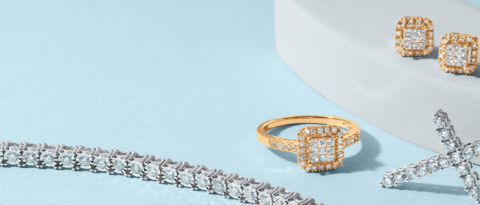For centuries, diamonds have symbolized wealth, love, and prestige. They’ve adorned royal
crowns, engagement rings, and high-fashion jewelry. However, beneath their sparkling allure
lies a history of environmental concerns, ethical issues, and market monopolies. In recent
years, a new contender has emerged—lab-grown diamonds—challenging traditional mined
diamonds and reshaping the jewelry industry.
What Are Lab-Grown Diamonds?
Lab-grown diamonds, also known as synthetic or cultured diamonds, are created in controlled
laboratory environments using advanced technology that replicates the natural diamond
formation process. Unlike cubic zirconia or moissanite, these diamonds have the same
physical, chemical, and optical properties as natural diamonds. The two primary methods
used to create lab-grown diamonds are:
- High Pressure-High Temperature (HPHT) – Mimics the Earth’s natural process by
subjecting carbon to extreme pressure and temperature.
- Chemical Vapor Deposition (CVD) – Uses a gas mixture to grow diamond layers on a
seed crystal.
Both methods produce real diamonds that are virtually indistinguishable from mined
diamonds, even under a jeweler’s loupe.
Why Are Lab-Grown Diamonds Gaining Popularity?
- Ethical and Conflict-FreeOne of the biggest concerns surrounding mined diamonds is their association with blood
diamonds—diamonds mined in war zones and sold to finance armed conflicts. Lab-grown
diamonds eliminate this issue entirely, offering consumers a conflict-free alternative with full
traceability of their origin.
- Environmentally Friendly
Diamond mining has a significant environmental impact, including deforestation, soil erosion,
and excessive water consumption. In contrast, lab-grown diamonds require far fewer natural
resources and produce significantly less carbon emissions. Some lab-grown diamond
companies even use renewable energy, making them an eco-conscious choice.
- Cost-Effective Luxury
Lab-grown diamonds are typically 30-40% more affordable than mined diamonds of the
same quality. This price difference allows consumers to invest in larger, higher-quality stones
without the steep price tag associated with natural diamonds.
- Technological Advancements & Customization
With advancements in technology, lab-grown diamonds can be produced with precise control
over color, clarity, and carat weight. This has opened doors for custom jewelry designs, rare
fancy-colored diamonds, and innovations in high-tech industries like semiconductors and
quantum computing.
Are Lab-Grown Diamonds the Future?
The diamond industry is at a turning point. Major luxury brands and jewelers, including De
Beers and Pandora, have embraced lab-grown diamonds, acknowledging their growing
demand. As consumers become more informed about sustainability and ethics, lab-grown
diamonds are set to dominate the future of fine jewelry.
With their blend of beauty, ethics, and affordability, lab-grown diamonds are not just a
trend—they are a paradigm shift in the world of luxury. Whether for engagement rings,
statement jewelry, or technological advancements, these diamonds are here to stay, proving
that luxury can be both stunning and sustainable.










